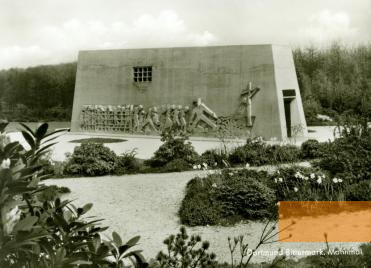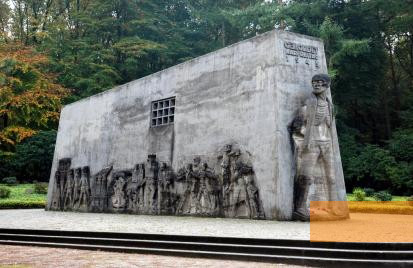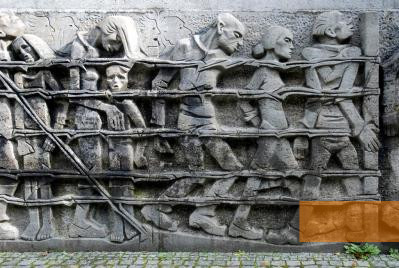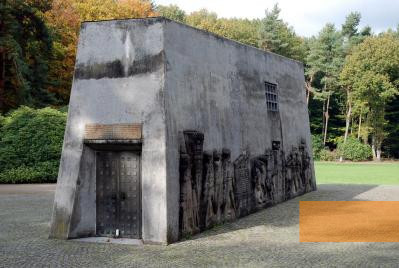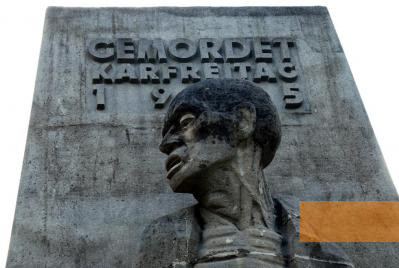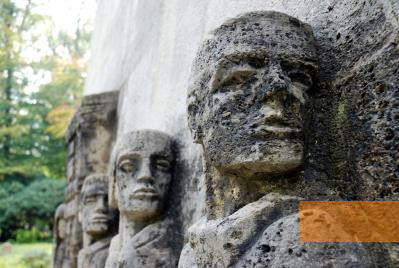In 1958, a monument in honour of 300 prisoners who were shot by the Gestapo in the Bittermark and Romberg forest parks between March and April 1945 was erected. It stands in the Bittermark municipal forest in the Hombruch district in the south of Dortmund.
Between December 1944 and March 1945, the Dortmund State Police, a department of the Gestapo, arrested many members of the resistance movement, which had been active in southern Westphalia since 1943. The Gestapo brought those they arrested to their headquarters in Dortmund-Hörde. Next to about 30 resistance fighters there were about 200 further people incarcerated at the Gestapo prison in Dortmund-Hörde in March 1945, among them many non-German forced labourers and prisoners of war. Between March and the beginning of April 1945, the Gestapo executed these prisoners in several shooting campaigns - executions even took place during Easter. Members of the Gestapo conducted these shootings at various sites in the south of Dortmund, including the Romberg Park and Bittermark municipal forest. The prisoners were mostly shot in bomb craters, which were then filled up. The Gestapo conducted the last shooting on April 12, 1945, one day before American troops marched into Dortmund.
The Gestapo shot about 300 prisoners in the south of Dortmund in March and April 1945. About thirty of them were members of the resistance movement, many of them communists. Most of the victims were non-German forced labourers and prisoners of war, mostly from the Soviet Union, but also from France, Belgium, the Netherlands, Yugoslavia and Poland.
About a week after the arrival of American troops in Dortmund, on April 19, 1945, members of the NSDAP had to exhume the dead in Bittermark forest. Some of the dead were buried in a grave in Bittermark, the rest was moved to cemeteries in Dortmund's Hörden district. The city of Dortmund and the French association of forced labour deportees have been in contact since 1956. The association partook in the erection of the monument in Bittermark forest. On Good Friday in 1958, an unknown victim of the shootings was laid to rest in a monumental crypt designed by French artist Léon Zack. In 1960, an extension to the monument consisting of reliefs by Karel Niesrath was unveiled. The inside of the crypt is officially declared French state territory. A commemorative ceremony is held at the monument annually on Good Friday.
- Name
- Mahnmal Bittermark
- Address
-
Bittermark
44227 Dortmund - Open
- The monument is accessible at all times.


